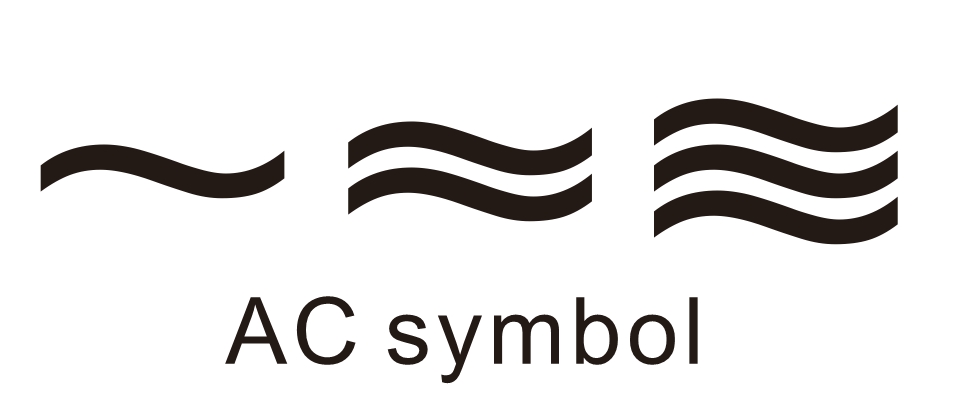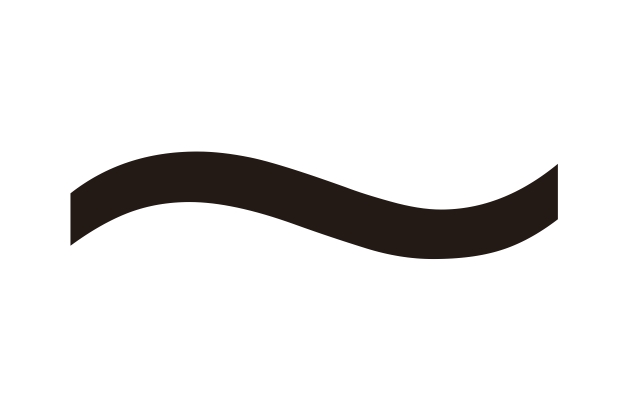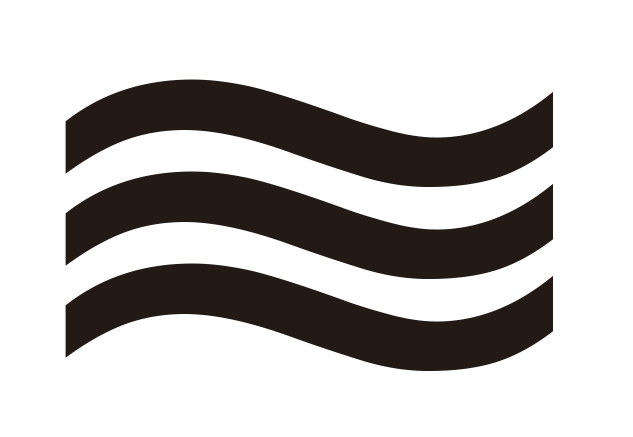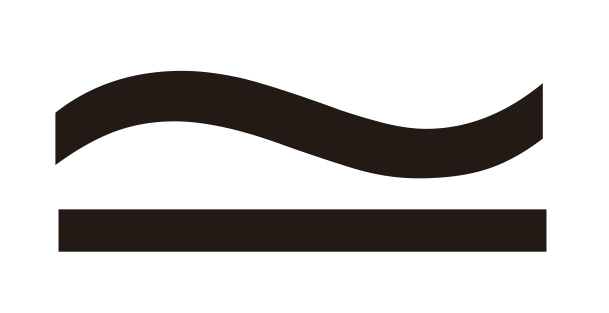Alternating current symbol: Comprehensive analysis and application guide


Alternating current (AC) is one of the most commonly used forms of current in modern power systems and is widely used in homes, industries and commerce. Alternating current symbols are various graphic symbols that represent alternating current and are used in circuit diagrams, electrical drawings and technical documents. This article will introduce the types, meanings, applications and how to use these symbols correctly.
Basic introduction to alternating current symbols
The symbol for alternating current is "~". This simple symbol has important significance in the field of electricity. It is the symbol for alternating current (AC). For example, when we see a symbol like AC220V, we know that this represents an alternating voltage of 220 volts, while the direct current voltage is marked with DC, such as DC24V. Alternating current is a current whose direction changes periodically over time, and the average current in one cycle is zero.
Basic concepts of alternating current
Definition
- Alternating current: a current whose direction changes periodically over time. Common alternating current waveforms include sine waves, square waves, triangle waves, etc.
- Frequency: The number of times the alternating current changes per second, measured in Hertz (Hz). Common standard frequencies are 50 Hz and 60 Hz.
- Voltage: The voltage value of alternating current is usually expressed in effective value (RMS), measured in volts (V).
Types and meanings of AC symbols
1. Basic AC symbols
Sinusoidal AC symbols
- Symbol: Usually represented by a wavy line, sometimes also represented by the "~" symbol.
- Meaning: Indicates that the current or voltage changes in a sinusoidal wave over time.
- Example: In a circuit diagram, a wavy line is used to indicate that the power supply or signal is a sine wave alternating current.

- Symbol: Usually represented by the letter "AC".
- Meaning: Indicates general alternating current, not specifically the waveform.
- Example: In a circuit diagram, "AC 220V" indicates that the power supply is 220 volts of alternating current.
2. Special AC symbols
Three-phase AC symbols
- Symbol: Usually represented by three wavy lines or three "~" symbols.
- Meaning: Indicates three-phase alternating current, commonly seen in industrial power systems.
- Example: In a circuit diagram, three wavy lines are used to indicate a three-phase power supply.

Single-phase alternating current symbol
- Symbol: Usually indicated by a wavy line or a "~" symbol.
- Meaning: Indicates single-phase alternating current, commonly seen in household power systems.
- Example: In a circuit diagram, a wavy line is used to indicate a single-phase power supply.

Symbol for direct current superimposed on alternating current
- Symbol: Usually indicated by a wavy line superimposed on a horizontal line or arrow line.
- Meaning: Indicates that alternating current is superimposed on direct current, commonly seen in some electronic devices.
- Example: In a circuit diagram, a wavy line superimposed on a horizontal line indicates that alternating current is superimposed on direct current.

The relationship between the characteristics of alternating current and the symbol of alternating current
1.Periodic changes in current
The magnitude and direction of alternating current change periodically over time, which is an important characteristic of alternating current. This periodic change usually presents a sinusoidal waveform. Of course, there are also other waveforms of alternating current such as triangular waves and square waves in practical applications, but most of the mains electricity used in life is alternating current with a sinusoidal waveform. The symbol "~" is like a concise representation, which implies the dynamic change characteristics of this current, which is in sharp contrast to the stable and unchanging direction of direct current.
From a mathematical point of view, the alternating current of a sinusoidal curve can be described by trigonometric functions to describe its change over time. For example, for a simple sinusoidal alternating current, its instantaneous current value can be expressed as i=ImSin(ωt +φ), where Im is the maximum value of the current, ω is the angular frequency, t is the time, and φ is the initial phase. The current characteristics described by this complex mathematical expression are all covered by the simple symbol "~", which is a highly concentrated identifier of the complex characteristics of alternating current.
2.The difference from direct current
Compared with direct current, the changing characteristics of alternating current are completely different. Direct current does not change periodically, and its current direction is constant. The "~" symbol of alternating current intuitively shows this difference. In circuit analysis and practical applications, this symbol allows engineers and technicians to quickly distinguish between AC and DC circuits, avoiding incorrect operations or design errors caused by confusion.
In terms of generation, AC is magnetic-based and mechanically generated. All AC must have electromagnetic properties and magnetic core materials; while DC is chemical-based, such as photovoltaics and lead-acid batteries, which mainly convert chemical energy into electrical energy. This difference in generation is also reflected in their logos, with "~" and "DC" representing two different sources of current.
In terms of conversion, AC to DC is rectified + filtered to obtain pulsating DC; DC to AC is oscillated + inverted to obtain various sine wave AC. The AC symbol plays a key role in distinguishing these conversion processes in the description and identification, ensuring accurate operation in circuit design, power transmission and equipment use.
The significance of AC symbols in practical applications
1.Power transmission and distribution
In the field of power transmission, AC is widely used. Because AC is easy to transmit, the voltage can be easily changed through a transformer. In the power grid, high-voltage transmission lines transmit alternating current, and their voltage identifications are such as AC110kV, AC220kV, etc. The "AC" and "~" symbols here clearly indicate that the transmitted power is alternating current. This identification helps power engineers accurately identify the type of current when designing, maintaining and operating power systems, ensuring the safety and efficiency of power transmission.
In household electricity, we use 220V AC power. The logo on the socket or the power requirements of the electrical equipment will indicate AC220V. The "AC" or "~" symbol in this logo reminds users that the device needs to be connected to an AC power source. If DC power is connected incorrectly, it may cause damage to the equipment or even cause a safety accident.
2.Identification and use of electrical equipment
Most electrical equipment will clearly identify the type of power supply it is suitable for. For equipment that uses AC power, the words "~" or "AC" and the corresponding voltage and frequency requirements will be marked on the surface of the equipment or in the manual. For example, common household appliances such as televisions, refrigerators, and air conditioners have power logos that clearly indicate that they need to be connected to an AC power source. This helps consumers use electrical equipment correctly, and also makes it easier for maintenance personnel to accurately identify power-related problems when performing maintenance.
In industrial equipment, AC is more widely used. Large motors, machine tools and other equipment usually use AC as a power source. The electrical control cabinets of these devices will have detailed AC markings, including voltage, frequency, number of phases and other information. For example, the marking of a three-phase AC motor may be displayed as AC380V, 50Hz, three-phase. The "AC" here is to indicate the type of current used by the equipment through the AC symbol to ensure the normal operation and maintenance of the equipment.
Application of AC symbols
1. Application in circuit diagrams
- Power supply identification: In circuit diagrams, the AC symbol is used to identify the power supply type, such as "AC 220V" for 220 volt AC power.
- Signal identification: In signal transmission lines, the AC symbol is used to identify the signal type, such as "AC 12V" for 12 volt AC signals.
- Component identification: The AC symbol is marked next to the electrical component to indicate that the component is suitable for AC, such as "AC Relay" for AC relays.
2. Application in electrical drawings
- Wiring diagram: In wiring diagrams, the AC symbol is used to identify the type of cable or wire, such as "AC Power Cable" for AC power cable.
- Wiring diagram: In wiring diagrams, the AC symbol is used to identify the power type of the connection point to ensure correct connection.
3. Application in technical documents
- Instructions: In equipment instructions, the AC symbol is used to identify the working power supply of the equipment, such as "AC 110V/220V" to indicate that the equipment can work under 110 volts or 220 volts AC power supply.
- Maintenance manual: In maintenance manuals, the AC symbol is used to identify parts that need to be checked or replaced, such as "AC Capacitor" for AC capacitors.
How to use AC symbols correctly
1. Choose the correct symbol
- Select according to the waveform: If you need to clearly indicate the waveform, select the corresponding wavy line symbol.
- Select according to the number of phases: If it is three-phase AC, select three wavy line symbols; if it is single-phase AC, select one wavy line symbol.
- Select according to the superposition situation: If AC is superimposed on DC, select the superposition symbol.
2. Clear marking
- Mark voltage and frequency: clearly mark the voltage and frequency next to the symbol, such as "AC 220V 50Hz".
- Mark purpose: indicate the purpose next to the symbol, such as "AC Power Supply" for AC power supply.
3. Follow standards
- International standards: follow the standards of the International Electrotechnical Commission (IEC) to ensure the consistency and universality of symbols.
- Industry standards: follow the standards and specifications of the industry to ensure the accuracy and reliability of symbols.
FAQ
1. What are the common misunderstandings about AC symbols?
Confusing waveforms: mistakenly using sine wave symbols for non-sinusoidal AC.Ignoring the number of phases: not distinguishing between single-phase and three-phase AC, resulting in incorrect connections and configurations.
Incomplete marking: marking only the symbol without marking the voltage and frequency, resulting in incomplete information.
2. How to avoid errors when using AC symbols?
Read documents carefully: read relevant documents and technical specifications carefully when designing and drawing circuit diagrams.Reference standards: refer to international and industry standards to ensure the correct use of symbols.
Proofread: After completing the circuit diagram, proofread carefully to ensure that all symbols and annotations are correct.
Summary
Alternating current symbols are various graphic symbols that represent alternating current, which are widely used in circuit diagrams, electrical drawings and technical documents. By correctly understanding and using these symbols, the accuracy and reliability of circuit design can be ensured. I hope this article can help you better understand the types, meanings, applications and how to use these symbols correctly, so that you can be more comfortable in actual projects.
Statement:
All articles (images, texts, audio) on this site are uploaded and shared by users, or integrated from relevant internet sources, only for user's learning. If your rights are violated, please contact the administrator to delete! Link to this article: https://www.jinftry.com







